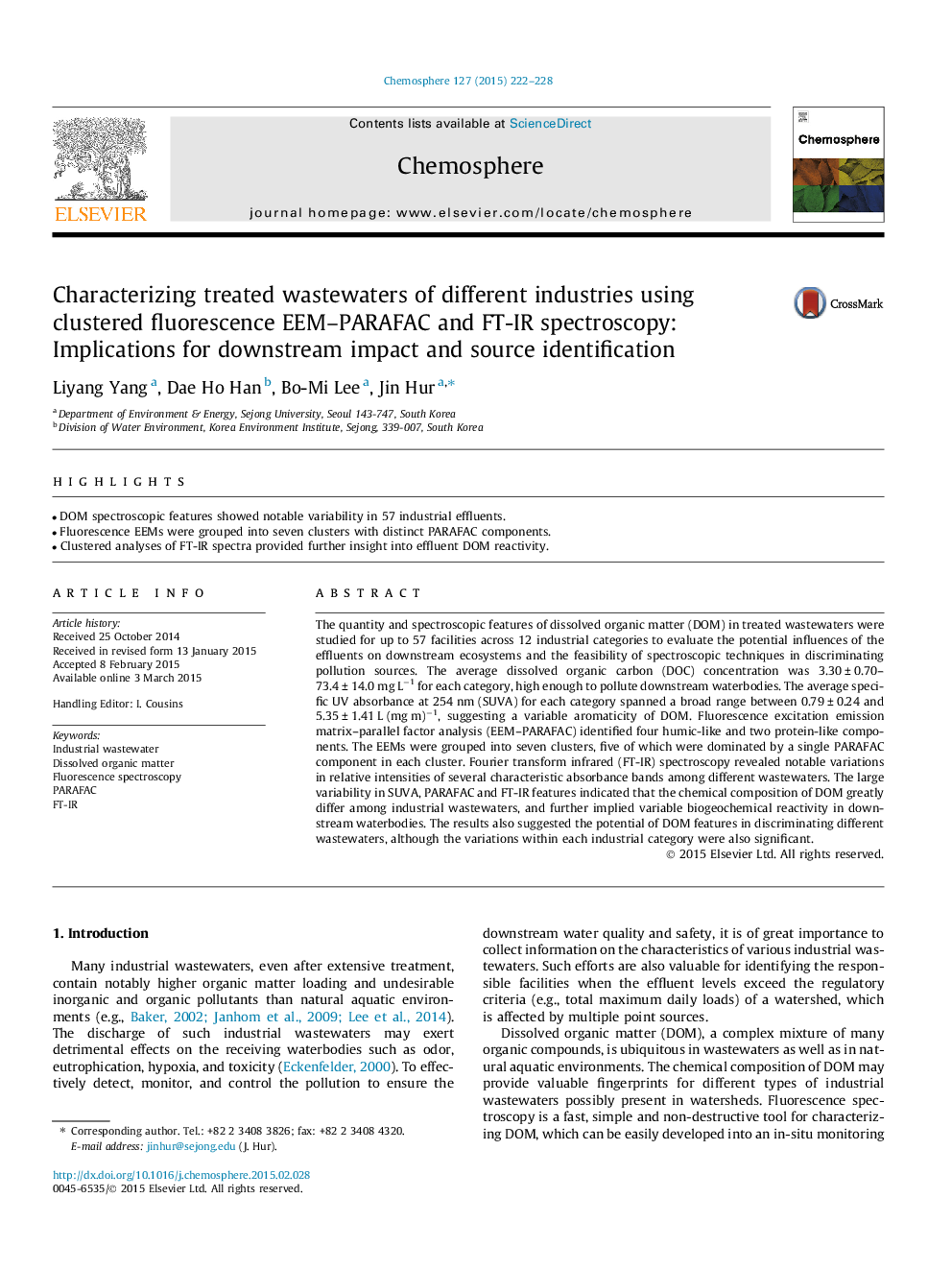| کد مقاله | کد نشریه | سال انتشار | مقاله انگلیسی | نسخه تمام متن |
|---|---|---|---|---|
| 4408542 | 1618844 | 2015 | 7 صفحه PDF | دانلود رایگان |

• DOM spectroscopic features showed notable variability in 57 industrial effluents.
• Fluorescence EEMs were grouped into seven clusters with distinct PARAFAC components.
• Clustered analyses of FT-IR spectra provided further insight into effluent DOM reactivity.
The quantity and spectroscopic features of dissolved organic matter (DOM) in treated wastewaters were studied for up to 57 facilities across 12 industrial categories to evaluate the potential influences of the effluents on downstream ecosystems and the feasibility of spectroscopic techniques in discriminating pollution sources. The average dissolved organic carbon (DOC) concentration was 3.30 ± 0.70–73.4 ± 14.0 mg L−1 for each category, high enough to pollute downstream waterbodies. The average specific UV absorbance at 254 nm (SUVA) for each category spanned a broad range between 0.79 ± 0.24 and 5.35 ± 1.41 L (mg m)−1, suggesting a variable aromaticity of DOM. Fluorescence excitation emission matrix–parallel factor analysis (EEM–PARAFAC) identified four humic-like and two protein-like components. The EEMs were grouped into seven clusters, five of which were dominated by a single PARAFAC component in each cluster. Fourier transform infrared (FT-IR) spectroscopy revealed notable variations in relative intensities of several characteristic absorbance bands among different wastewaters. The large variability in SUVA, PARAFAC and FT-IR features indicated that the chemical composition of DOM greatly differ among industrial wastewaters, and further implied variable biogeochemical reactivity in downstream waterbodies. The results also suggested the potential of DOM features in discriminating different wastewaters, although the variations within each industrial category were also significant.
Journal: Chemosphere - Volume 127, May 2015, Pages 222–228